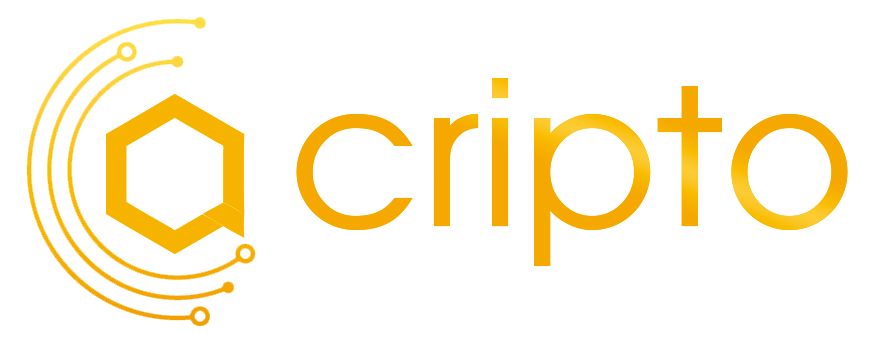Trezor Wallet-Recovery-Guide-for-Beginners
Troubleshoot Trezor Bridge Connection Issues Easily
First, check your usb driver installation. Ensuring that the latest drivers are installed is key to smooth connectivity. Visit the manufacturer’s website for downloads tailored to your operating system, whether it’s Windows, macOS, or Linux, ensuring cross-platform compatibility.
Next, confirm that the hardware bridge protocol is correctly set up in your Trezor Wallet. This protocol facilitates communication between your Trezor device and computer, allowing the software to recognize the hardware effectively. Restarting the Trezor Bridge application can also resolve minor glitches.
For optimal performance, make sure your device communication software is up to date. Regular updates often include fixes that prevent connection issues. If problems persist, try disconnecting and reconnecting your device or utilizing a different USB port to rule out port-specific issues.
Check Your Internet Connection for Trezor Bridge
Ensure your internet connection is stable and functioning. A reliable access point enhances hardware bridge protocol performance, facilitating seamless device communication software interactions. Verify that your modem and router are powered on and connected properly. If possible, switch from a wireless connection to a wired Ethernet connection to improve stability.
Test your internet speed using online tools to make sure it meets the requirements for smooth operation. Inconsistent speeds can hinder automatic device recognition and create connection problems. If your speed seems low, consider rebooting your router or contacting your internet service provider for assistance.
Check your firewall settings to ensure they allow Trezor Bridge to operate without restrictions. Adjust permissions as necessary to enable the application to communicate effectively with your device. Any security software installed on your system may also interfere; temporarily disable it to see if connection issues resolve.
If you’re using a USB connection, confirm that the USB driver installation is complete and functioning. Updating drivers can also enhance compatibility with various platforms. Trezor Bridge supports cross-platform compatibility, so switching between devices should not present issues–provided your internet connection remains stable.
Verify Trezor Bridge Installation and Updates
Confirm your Trezor Bridge is properly installed and up-to-date to ensure smooth operation. Follow these steps:
- Check Installation:
Ensure you have completed trezor suite installation correctly. Refer to the official guidelines for step-by-step instructions.
- USB Driver Installation:
Verify that the USB driver is installed. This is crucial for device communication software to recognize your hardware. Restart your computer if necessary after installation.
- Update Trezor Bridge:
Keep the Bridge updated to benefit from the latest features and bug fixes. Open the application and check for any available updates directly through the settings menu.
- Cross-Platform Compatibility:
Ensure your Operating System supports hardware bridge protocol to enable seamless device integration. Consult the compatibility list on the Trezor website for confirmation.
- Test the Connection:
Connect your Trezor device and launch the trezor suite. Monitor for any error messages that may indicate issues with the Bridge connection.
By verifying the installation and updates, you can mitigate connectivity issues effectively. Stay proactive in managing software compatibility and updates for optimal performance.
Configure Firewall Settings to Allow Trezor Bridge
Allow Trezor Bridge to communicate seamlessly with your device by modifying your firewall settings. First, identify the device communication software responsible for establishing the connection. Access your firewall settings via the control panel or security application installed on your system.
Add Trezor Bridge to the list of allowed programs. This step ensures that the software can bypass restrictions imposed by the firewall. Look for Trezor Bridge in your list of installed applications. If it’s absent, you may need to allow the executable file directly by navigating to its installation directory.
Check the inbound and outbound rules within your firewall settings. Create rules that enable both types of traffic for Trezor Bridge. This will enhance automatic device recognition, allowing your Trezor device to integrate seamlessly. Ensure that any specific ports used by the hardware bridge protocol are also opened, enabling uninterrupted communication.
After configuring the settings, verify that the USB driver installation is up to date. An outdated driver can cause issues with device recognition. Reboot your system to apply the changes, and then reconnect your Trezor device to check if the problem persists.
If you encounter any difficulties, consult your firewall documentation for troubleshooting tips tailored to your specific software. Maintaining smooth communication between Trezor Bridge and your device is crucial for an optimal experience.
Reboot Devices and Restart Trezor Bridge Application
Begin by rebooting your computer or mobile device. This simple step resolves many connectivity issues by refreshing the system’s resources. Once your device restarts, open the Trezor Bridge application.
If the Trezor Bridge isn’t responding or experiencing glitches, restarting the application can help restore normal functionality. Close the app completely and relaunch it to allow automatic device recognition to initialize correctly.
Ensure that your device maintains cross-platform compatibility. Trezor Bridge works across various operating systems, including Windows, macOS, and Linux. After restarting your device, verify that your operating system and the Trezor Bridge application are updated to the latest versions.
Check your connections. The hardware bridge protocol establishes a seamless device integration. If the Trezor device isn’t detected, disconnect and reconnect to ensure stable communication. This helps the device communication software to recognize the hardware appropriately.
In cases of persistent issues, consider trying the Trezor Bridge with a different USB port or cable. This can sometimes resolve hardware interaction problems that affect device recognition. Finally, if problems continue, consult Trezor support for further assistance.
Inspect USB Connections and Device Compatibility
Ensure your Trezor device connects smoothly by inspecting your USB connections. Check the cable for any damage and ensure it fits securely into both the Trezor and your computer’s USB port. Sometimes, loose connections can interrupt device communication software necessary for seamless operations.
Verify that your computer’s operating system has the correct USB driver installation. Outdated or incompatible drivers can hinder the hardware bridge protocol required for Trezor devices. Utilizing the latest drivers ensures optimal performance and reliable automatic device recognition during setup.
Test different USB ports on your computer. Ports may provide varying levels of power and stability, affecting connectivity. Additionally, if your Trezor is connected through a USB hub, bypass it by connecting directly to the computer to avoid potential bottlenecks.
Check your device’s compatibility. Trezor supports a variety of systems including Windows, macOS, and Linux, but ensure your operating system meets the minimum requirements for seamless integration with the device.
For more detailed information on USB connection issues and compatibility, visit the official Trezor support page: https://trezor.io/support/.
Contact Support for Persistent Trezor Bridge Issues
If you’re facing ongoing challenges with the Trezor Bridge, reaching out to support is a key step. First, ensure your hardware bridge protocol is up to date. A quick check on the Trezor website can guide you through the latest updates compatible with your device.
For issues related to device communication software, verify that you have the appropriate version installed on your system. Often, uninstalling and reinstalling can resolve lingering problems, especially if you suspect corrupt files affecting your setup.
Check your USB driver installation. An outdated or incorrect driver can hinder seamless device integration. Visit your computer’s device manager, locate the USB drivers, and update them to ensure they recognize your Trezor device automatically.
If automatic device recognition fails, use other USB ports or devices to rule out hardware malfunctions. Sometimes, replacing your USB cable can resolve connection issues that seem persistent.
When applying these troubleshooting methods doesn’t alleviate the connection problems, support is ready to assist. Keep a record of any error messages, as they can help expedite the troubleshooting process. Trezor support can also offer specific guidance tailored to your situation and help ensure your connection issues are resolved promptly.
Question-answer:
What common issues can cause connection problems with Trezor Bridge?
Connection issues with Trezor Bridge can arise from several sources. One common factor is an unstable internet connection, which can interrupt communication between your Trezor device and your computer. Another issue may be related to outdated software or firmware on either the Trezor device or the Trezor Bridge application. Additionally, browser settings or extensions that block certain scripts can interfere with the connection. Lastly, USB connection problems, such as a faulty cable or port, can also lead to difficulties in establishing a stable connection.
How can I check if my Trezor device is properly connected to my computer?
To verify your Trezor device connection, start by checking if it is visibly recognized by your computer. You should see a prompt on your Trezor screen instructing you to unlock the device. Next, ensure the Trezor Bridge application is up and running. If it’s installed correctly, open a compatible browser and access the Trezor web wallet. If your device is recognized, it should display your wallet balance and transaction history. If not, try unplugging and re-plugging the USB cable, or connecting to a different USB port.
What are the steps to resolve connection issues with Trezor Bridge?
To troubleshoot Trezor Bridge connection problems, follow these steps: First, restart your computer and the Trezor device. Next, ensure that you are using the latest version of Trezor Bridge and that your device firmware is up to date. Check your internet connection for stability, and if possible, try a wired connection instead of Wi-Fi. Clear your browser’s cache and disable any extensions that might interfere. Lastly, try using a different browser or computer to isolate the problem.
Is there a way to test if Trezor Bridge is operating correctly?
Yes, you can test if Trezor Bridge is functioning properly by accessing the Trezor website and looking for the connectivity status. If the Bridge is operating well, you should see a message indicating a successful connection. Additionally, you can check the Trezor social media channels or forums for any announcements about outages or maintenance, which might be affecting the connection. If everything appears normal, but you’re still having issues, consider reinstalling the Trezor Bridge application.
What should I do if my Trezor device is not recognized after troubleshooting?
If your Trezor device remains unrecognized after attempting standard troubleshooting steps, consider these actions: First, examine your USB cable for damage and try using a different one. Also, check your USB ports by connecting other devices to confirm they are working. If you have access to another computer, test the Trezor device there to rule out issues with your current setup. If the problem persists, reach out to Trezor’s support team for further assistance, as there may be an issue with the device itself that requires professional attention.
What are the common issues that can cause problems with Trezor Bridge connection?
There are several common issues that may result in connection problems with Trezor Bridge. First, ensure that your device is up to date; outdated software can often lead to compatibility issues. Second, check your internet connection. A weak or intermittent connection can prevent Trezor Bridge from establishing a proper link. Third, issues with USB ports or cables can hinder communication between your Trezor device and the computer. Lastly, browser issues, such as cache or extension conflicts, may also disrupt the connection. Running a quick diagnosis on these aspects often resolves the problems.
How can I troubleshoot my Trezor Bridge if it is not connecting at all?
If you’re facing issues connecting to Trezor Bridge, start by ensuring that both the Trezor Bridge software and your browser are updated to their latest versions. Next, unplug the Trezor device and retry connecting it, using different USB ports, or trying a different cable if possible. Clearing your browser’s cache and disabling any extensions can also help improve connectivity. If the problem persists, restarting your computer and checking your firewall settings to ensure it isn’t blocking the connection might be necessary. In case these steps do not fix the issue, reinstalling Trezor Bridge can be a good next step. Lastly, consulting the Trezor support FAQ page may provide additional guidance tailored to your specific circumstances.



